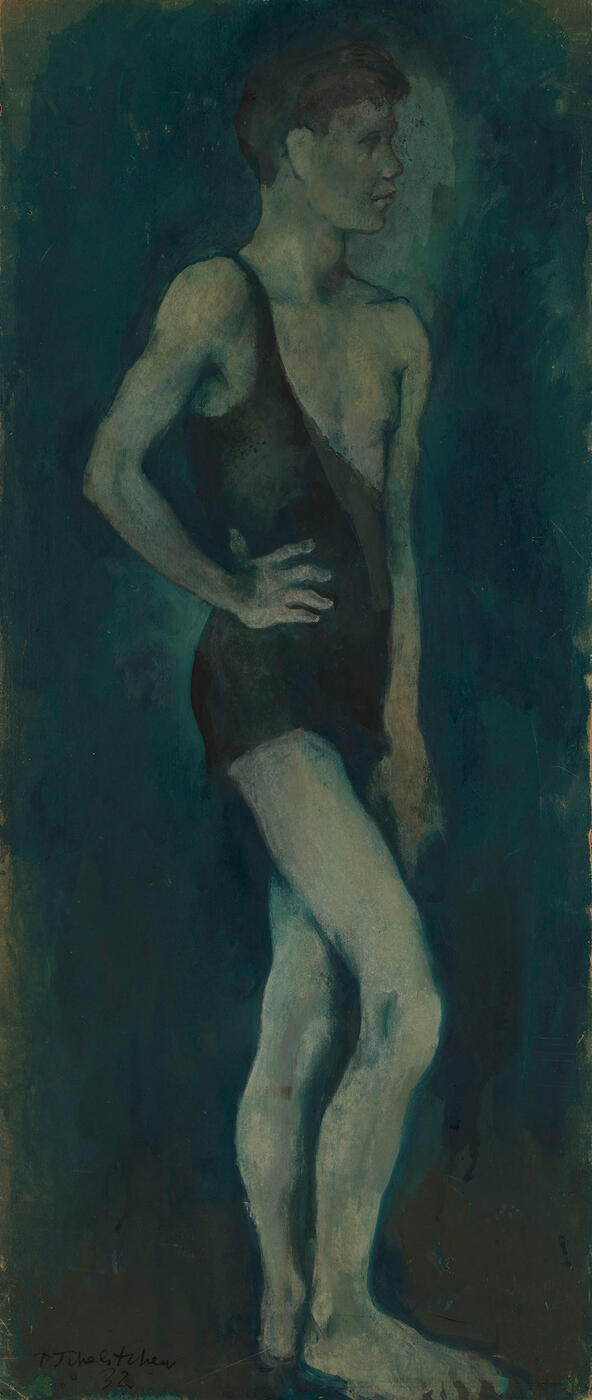8 June 2016 Russian Art and Photography Auctions
8 June 2016

* 101. TCHELITCHEW, PAVEL (1898-1957)
Boy in a Leotard, signed and dated 1932.
Gouache on cardboard, 75 by 32 cm .
45,000-60,000 GBP
Provenance: Collection of Ruth Ford (Mrs Zachary Scott) and Charles Henri Ford, New York.
Russian Art, Sotheby’s London, 22 April 2010, lot 302.
Acquired at the above sale by the present owner.
Private collection, USA.
Exhibited: Pavel Tchelitchew, Gallery of Modern Art, New York, 20 March–19 April 1964, No. 103 (labels on the backing cardboard and the frame on the reverse).
Literature: Exhibition catalogue, Pavel Tchelitchew, New York, Gallery of Modern Art, 1964, p. 59, No. 103, listed.
A. Kuznetsov, Pavel Tchelitchew. Metamorphoses, Stuttgart, Arnoldsche, 2012, p. 170, No. 137, illustrated; p. 294, listed.
As much as we know today about the oeuvre of Pavel Tchelitchew, none of it reveals the true essence of his exploits. Such seeming knowledge fuels the desire to peruse and probe every twist and turn of his experiments in painting. But it would be wrong to regard these as the exercises of a virtuoso or the acrobatics of a sophisticated mind. Tchelitchew’s experiments – the results of his incessant attempts to reinterpret the surrounding reality – are an altogether different phenomenon, addressing questions of human existence, the philosophical rationale of our physical and, perhaps, our other existence.
Our current catalogue presents four works by Tchelitchew, all produced in Paris. The Parisian period of his artistic life is of immense significance, for it was in the French capital that he acquired all his most valuable experience. Forming his own original spatial-temporal point of view in his painterly compositions, Tchelitchew laid the foundations for his individuality to come. Passing through a period of interest in murky ‘monochromes’, the artist enriched his colourist vision, consciously ‘decolourising’ his subtly nuanced portraits and still-lifes. This complex tonal painting had a particularly beneficial influence on his feel for colour, opening up a special harmony in his palette and, at the same time, his trademark ‘borderline’ provocativeness, guarding against superfluous decorative improvisations.
In Paris, Tchelitchew painted what everyone else was painting – flowers, fruit, life models, sailors, circus acrobats, cabaret dancers. But his special talent for a harmonious synthesis of the painterly plastics and his masterly use of different hues of the one colour instantly distinguished him from the ranks of the dozens of other accomplished artists: “His constant and faithful rendition of natural organic phenomena may have been made more orderly by association with Cubism and its heirs. But it was the ‘rose’ and ‘blue’ quasi-humanist Picasso’s, rather than any plastic analysis, which would impact him most for the next decade.” – aptly noted Lincoln Kirstein, the artist’s friend and researcher of his oeuvre.
Alexander Kuznetsov, art historian
Notes on symbols:
* Indicates 5% Import Duty Charge applies.
Ω Indicates 20% Import Duty Charge applies.
§ Indicates Artist's Resale Right applies.
† Indicates Standard VAT scheme applies, and the rate of 20% VAT will be charged on both hammer price and premium.